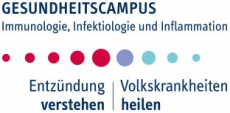Staining
Two basic techniques are used: direct labeling and indirect labeling. Both labeling methods are suitable for light/confocal microscopy.
Direct labeling consists of using a fluorescently labeled primary antibody or chemical ligand to cause the structure of interest to become fluorescent. Advantages of this method are speed and ease of use. A potential disadvantage is the lack of sensitivity (low signal intensity).
Indirect labeling involves binding of a primary antibody to the epitope of interest, followed by a fluorescently labeled secondary antibody. The primary advantage of using this technique is the potential great amplification of signal through an antibody cascade. The disadvantages include increased complexity, the method is more time consuming, and there are often problems with non-specific antibody binding.
Choosing a Fluorescent Label
The choice of label depends upon the available equipment (lasers, filters) and the availability of certain fluorochromes conjugated to the required antibodies for use in multiple labeling schemes. In general, the laser lines available dictate which fluorophores can be used. Recent advances in biochemistry have created new families of fluorophores with very favorable signal-to-noise and quantum efficiency (QE) properties. In this respect the Cy and Alexa dyes are particularly useful. Both families have high QEs, are very resistant to photobleaching, and are available in a variety of excitation/emission wavelengths. Fluorescence detection is not the only way to use a confocal, however. The same light that passes through a specimen while imaging a fluorophore may be used to image the specimen by brightfield or phase-contrast or the Nomarski technique. Combining the emitted fluorescence and transmitted light signal is a particularly powerful technique for illustrating details of a cell layer that may not be fully fluorescent. An additional non-fluorescence based technique is reflection-mode confocal microscopy. Light reflected from the point of focus is collected and used as the source of signal for generating the image.






